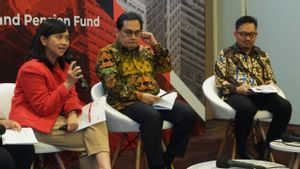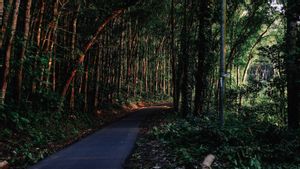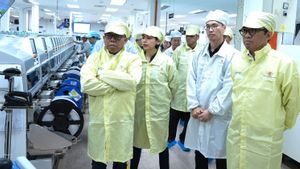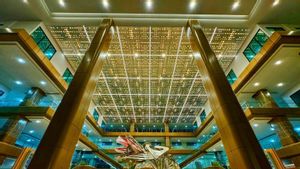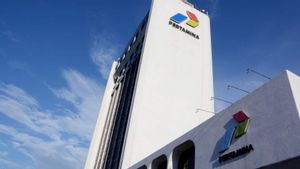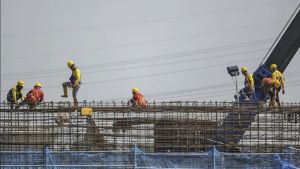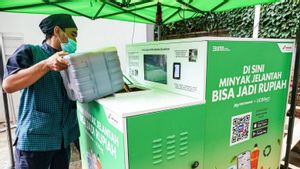JAKARTA - The Ministry of Transportation (Kemenhub) said that trains are one of the modes of transportation that can become the backbone of Indonesian environmentally friendly transportation in the future.
"Services must be integrated, safe, comfortable, affordable, reliable and as the backbone of mass transportation between cities and cities," said Director General of Railways of the Ministry of Transportation Mohamad Risal Wasal in the National Seminar: Green Financing Strategy for the Transportation Secretariat for Fair Railway Competitiveness, quoted from Antara, Wednesday, September 20.
Risal said that this potential can be seen from the comparison of energy consumption needed by trains with other types of transportation. For example, to transport 1,500 people, trains only need three liters of fuel per kilometer with an energy use of 0.0020 fuel per kilometer per Pnp.
This amount is smaller when compared to buses that can carry 40 people and consume 0.5 liters of fuel per kilometer and use its energy which reaches 0.0125 fuel per kilometer per Pnp.
On the other hand, the application of railway technology in Indonesia also makes the advantages of trains even higher. This can be seen from the construction of MRT in Jakarta, Sky Train at Soekarno-Hatta Airport, Makassar-Pare-pare Railways, to LRT in Jabodebek which help minimize the use of private vehicles on highways.
Risal stated that railway infrastructure technology in Indonesia also continues to develop. The government also plans to develop a Rolling Highway (Rola), which has a simpler handling process.
"If you look at what happened, we have a main plan on how the vision is to be competitive, integrated, high technology, industrial synergy, affordable, and responsive to railway development," he said.
For the superiority that has been studied in depth, the Ministry of Transportation through the 2030 National Railway Main Plan (RIPNAS) targets the construction of a 10,524-kilometer rail network in the country.
Another thing targeted in RIPNAS includes the availability of passenger train facilities as many as 2,839 locomotives and 34,178 trains. Then 2,475 locomotives of freight train facilities and 48,364 carriages.
In order to achieve this target, Risal admitted that the Ministry of Transportation had carried out four efforts in the form of optimizing existing infrastructure, namely utilizing existing railway infrastructure, being treated and reactivated, resulting in the TQI category.
According to him, to reduce the bad impact on the environment, electrification of the construction of railway infrastructure has begun to be directed at MRT, LRT, high-speed trains and cable trains, as well as other urban trains.
SEE ALSO:
Capacity development is also carried out through the construction of multiple lines, improvement of facilities, signaling, construction of new stations, and provision of intra-modal and inter-modal integration facilities.
As for improving the safety and security of railway operations, it was developed through the construction of operating facilities and signaling by utilizing the latest information technology in the form of Grade of Automation (GoA), crossings are not in the same field or in the same field and are equipped with a disaster information system.
"In addition, if you look at the train, people don't care about it, respect women, pregnant people and their parents because it is written that (sit place) the parents, there are women's carriages and no one violates them. That's what makes a new civilization in the Indonesian transportation system," he said.
The English, Chinese, Japanese, Arabic, and French versions are automatically generated by the AI. So there may still be inaccuracies in translating, please always see Indonesian as our main language. (system supported by DigitalSiber.id)



